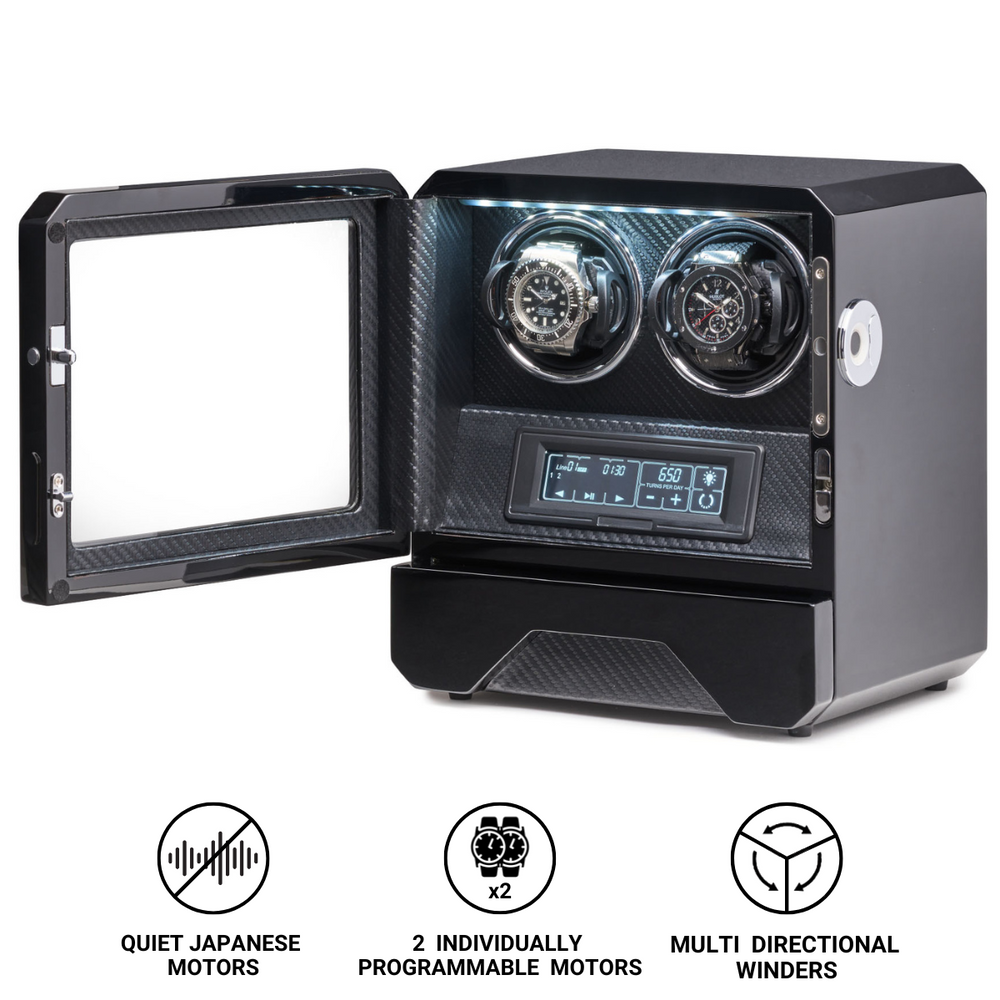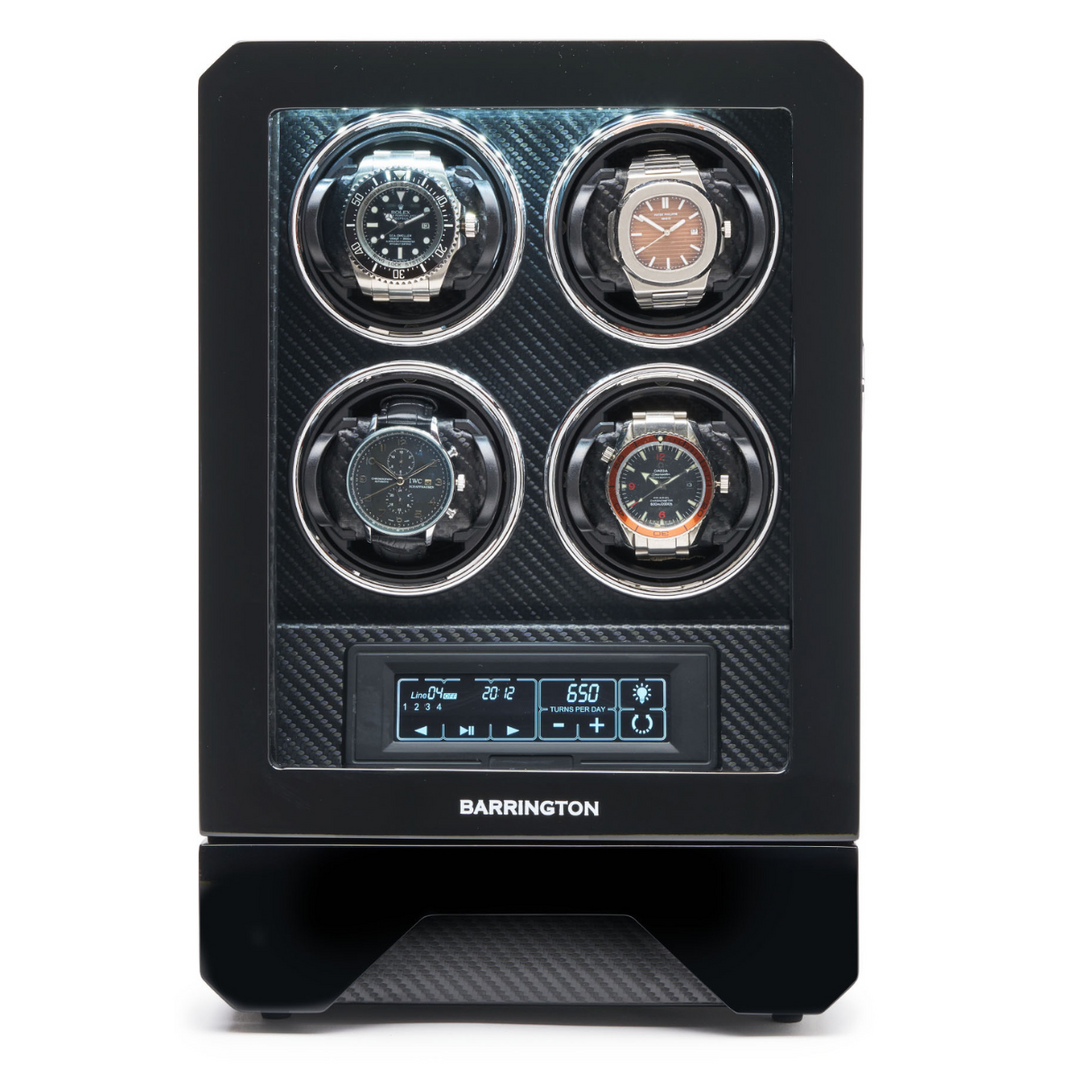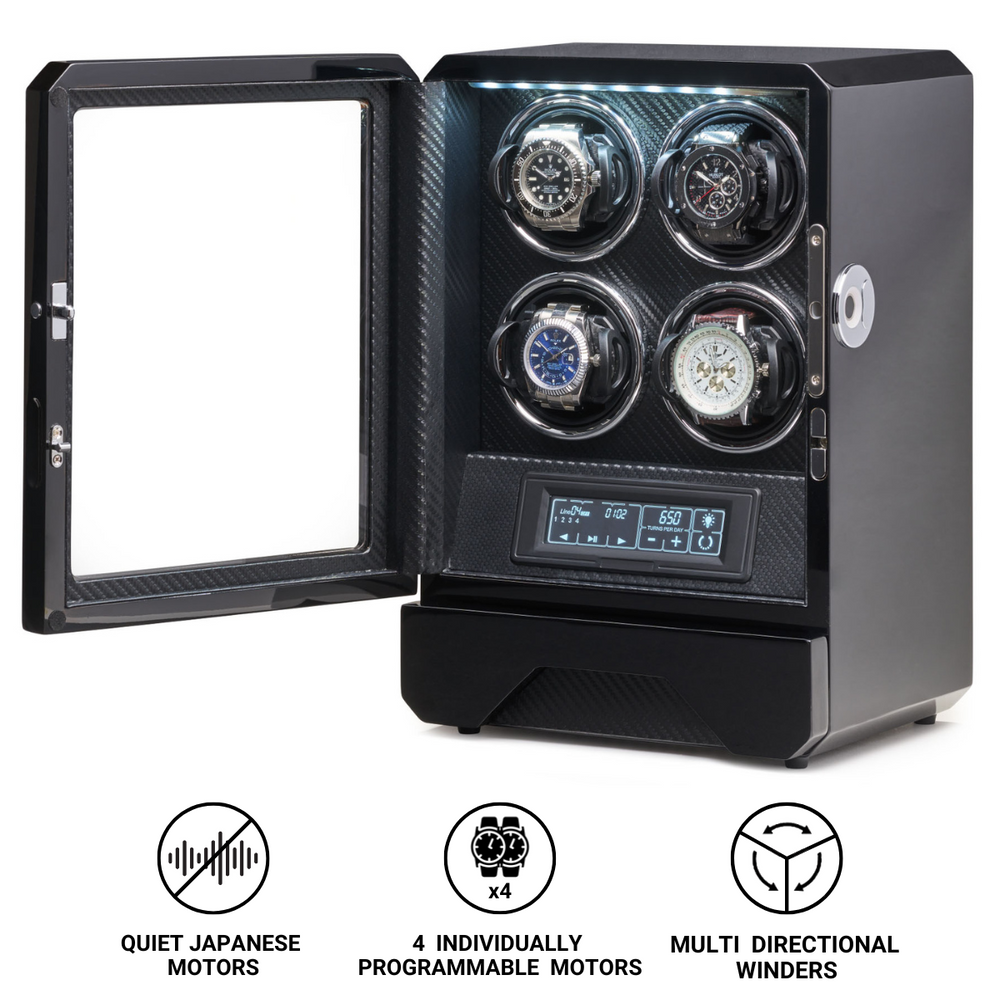What is Cerachrom?
In the realm of luxury watchmaking, innovation often takes the form of subtle, enduring refinement rather than dramatic transformation. One of the most significant technical breakthroughs of the 21st century in this regard is Rolex’s Cerachrom bezel. Developed entirely in-house and introduced in 2005, Cerachrom represents Rolex’s answer to one of the industry’s long-standing challenges: how to create a bezel that remains pristine, legible, and colourfast after decades of exposure to wear, sunlight, and environmental stress.
The name Cerachrom is derived from two words: ceramic and chroma, meaning colour. The material combines exceptional resistance to scratches and fading with a deep, lustrous finish that maintains its appearance over time. More than just a cosmetic improvement, Cerachrom has become an emblem of Rolex’s technical mastery and dedication to functional beauty.
The Origins of the Cerachrom Bezel
Before the introduction of Cerachrom, most Rolex bezels were crafted from aluminium or acrylic inserts, particularly in professional models such as the Submariner, GMT-Master, and Daytona. While these materials offered lightness and versatility, they were vulnerable to scratches, ultraviolet fading, and general wear. Over time, aluminium bezels often lost their vibrancy, developing patina that, while appreciated by vintage collectors today, contradicted Rolex’s pursuit of durability and perfection.
By the late 20th century, advancements in material science opened new possibilities. High-tech ceramics, already used in aerospace and industrial applications, offered exceptional hardness and resistance to degradation. Rolex’s engineers recognised the potential of ceramic for horological use but faced a major challenge: transforming a material known for its brittleness into something suitable for the precise tolerances of a rotating watch bezel.
After years of research and development, Rolex unveiled the first Cerachrom bezel in 2005 on the Oyster Perpetual GMT-Master II. This marked the beginning of a new era, as the brand successfully merged cutting-edge science with traditional craftsmanship.
The Science Behind Cerachrom
Cerachrom is not a coating or surface treatment; it is a solid, monobloc ceramic material created through an intricate process that takes several days. The production begins with ultra-fine zirconium dioxide or aluminium oxide powder, which is mixed with binding agents and pigments to achieve the desired colour. The mixture is then pressed into a precise mould that forms the basic shape of the bezel insert.
At this stage, the material is fragile and porous. It undergoes a process called sintering, during which it is heated at temperatures exceeding 1,500 degrees Celsius. During sintering, the ceramic particles fuse together, shrinking the component by approximately 25 percent while drastically increasing its density and hardness. The result is an almost indestructible structure that is impervious to corrosion, UV radiation, and scratches.
Rolex then polishes the bezel to achieve its signature gloss, a finish so reflective that it often resembles enamel. Depending on the model, the numerals and graduations are either engraved or moulded before the sintering process. These markings are then filled with a thin layer of platinum or gold using a proprietary Physical Vapour Deposition (PVD) or electroplating technique, ensuring both legibility and elegance.
The final result is a bezel that can resist almost anything the wearer encounters, from saltwater to sand, from impacts to the relentless heat of the sun.
Why Cerachrom Matters
The introduction of Cerachrom was far more than an aesthetic enhancement; it represented a leap in functional reliability. A watch bezel is not a decorative detail but a vital component that often serves practical purposes such as measuring elapsed time, calculating second time zones, or reading tachymetric scales. For professional watches like the Submariner or GMT-Master II, the bezel must remain both legible and durable in extreme conditions.
Traditional aluminium inserts could fade, chip, or scratch, gradually losing legibility. By contrast, a Cerachrom bezel retains its original appearance for decades. Its hardness is rated at approximately 1,200 on the Vickers scale, several times higher than stainless steel. Even contact with rock, metal, or concrete is unlikely to leave a visible mark.
Another key advantage is its immunity to UV degradation. While coloured aluminium and acrylic bezels would eventually lose their vibrancy under sunlight, Cerachrom maintains its tone indefinitely. This stability ensures that Rolex watches retain their original appearance, preserving both aesthetic and resale value.
For Rolex, Cerachrom is not only a technical solution but a statement of philosophy: to create watches that remain as beautiful and functional after years of use as the day they left the workshop.
Evolution of Cerachrom in Rolex Watches
Since its debut in 2005, the use of Cerachrom has expanded across nearly all of Rolex’s professional lines. Each model introduced new refinements to the manufacturing process, demonstrating Rolex’s continual pursuit of perfection.
The GMT-Master II was the first to feature a Cerachrom bezel, originally in a single black colour. In 2007, Rolex applied the technology to the Yacht-Master II, and in 2008 to the Submariner and Daytona models. Early Cerachrom bezels were monocolour, as creating two-tone bezels from ceramic was thought to be impossible.
However, Rolex overcame this barrier in 2013 with the release of the GMT-Master II “Batman” (black and blue bezel) and later the “Pepsi” (red and blue). The process required an ingenious breakthrough: the ceramic insert is first produced in one colour, and then half of it is chemically modified to achieve the second shade. This innovation redefined what was thought achievable with ceramic and solidified Rolex’s position as a pioneer in materials engineering.
Today, Cerachrom bezels can be found across models such as:
-
Submariner – offering sleek, monochromatic options in black or green with platinum-filled numerals.
-
GMT-Master II – featuring bicolour bezels like the “Batman”, “Pepsi”, and “Root Beer”, symbolising both aesthetic and technical mastery.
-
Cosmograph Daytona – where the Cerachrom bezel enhances the legibility of the tachymetric scale while providing exceptional resistance to wear.
-
Yacht-Master II – using a blue Cerachrom bezel for nautical elegance and durability.
Each application demonstrates how Cerachrom can adapt to various roles while maintaining consistent excellence in finish and function.
The Aesthetics of Cerachrom
Beyond its durability, Cerachrom represents a triumph of aesthetics. The material possesses a depth of colour and shine that is unique in watchmaking. Under light, it exhibits a smooth, mirror-like surface that enhances the sophistication of Rolex sports models.
Unlike metallic or painted bezels, the colour of Cerachrom is integral to the material itself. It is created through precise pigment blending and controlled firing conditions rather than surface coating. This intrinsic colouring ensures that the hue remains consistent across the entire structure and will never peel or fade.
Rolex’s attention to visual harmony extends even to the way light interacts with Cerachrom. The glossy surface reflects surrounding tones while maintaining crisp contrast between the polished background and the matte-filled numerals. This balance between shine and readability exemplifies Rolex’s design philosophy, where beauty must always serve clarity and purpose.
The Technical Challenges of Cerachrom Production
Working with ceramics is notoriously complex. The material’s hardness, while advantageous in daily use, poses immense challenges during manufacturing. Once sintered, ceramic can no longer be reshaped or machined easily. Even the slightest miscalculation in dimensions before firing can lead to shrinkage errors or deformation.
To overcome these challenges, Rolex employs state-of-the-art technology combined with strict manual inspection. Each Cerachrom insert is polished, engraved, and filled by hand before final assembly. The tolerances are microscopic, as the bezel must rotate smoothly with tactile precision while withstanding pressure and corrosion.
Producing bicolour bezels required even more ingenuity. The ability to combine two different hues within a single piece of ceramic was unprecedented in the industry. Rolex achieved this through a patented process involving selective chemical treatment and controlled diffusion of pigments during sintering. The result is seamless colour transitions without any visible boundary or weakness.
These advances are closely guarded within Rolex’s own foundries and research facilities in Switzerland, reinforcing the brand’s philosophy of complete vertical integration. Every Cerachrom bezel is made entirely in-house, from raw powder to finished product.
Cerachrom and the Legacy of Rolex Innovation
Throughout its history, Rolex has been defined by its ability to merge scientific progress with timeless design. The Oyster case, Perpetual rotor, and Parachrom hairspring are all examples of innovations that elevated the brand’s reputation for reliability. Cerachrom stands proudly within this lineage.
By solving the problem of bezel wear and fading, Rolex set a new standard for the durability of external watch components. The introduction of Cerachrom also reinforced the identity of the brand’s professional watches, which combine elegance with robust engineering. A Submariner or Daytona equipped with a Cerachrom bezel is designed not only to perform under pressure but to remain visually immaculate for decades.
The material has become inseparable from the image of modern Rolex. Its gleaming surfaces are instantly recognisable, and its resilience aligns perfectly with the company’s motto: “A crown for every achievement.”
The Broader Impact on the Watch Industry
Rolex’s introduction of Cerachrom influenced the entire watch industry. Other brands soon began developing their own ceramic bezels, recognising the advantages in durability and aesthetic longevity. However, few have matched the consistency, polish, and colour depth achieved by Rolex’s process.
Cerachrom’s success also shifted consumer expectations. Buyers began to view ceramic as a benchmark of modern luxury, associating it with advanced engineering and permanence. As a result, ceramic is now used not only for bezels but also for entire watch cases and bracelets in high-end models across various brands.
In this way, Cerachrom has had an impact far beyond its original role, inspiring new directions in both materials science and design philosophy across the industry.
Conclusion
Cerachrom represents a perfect synthesis of innovation, aesthetics, and durability. It embodies the spirit of Rolex’s relentless pursuit of perfection, combining scientific precision with visual artistry. From its inception in 2005 to its role today across multiple iconic models, Cerachrom has redefined what a bezel can be, transforming a vulnerable component into an enduring masterpiece.
Scratch-resistant, colourfast, and eternally lustrous, the Cerachrom bezel stands as one of Rolex’s most important contributions to modern watchmaking. It is a silent testament to the brand’s belief that true luxury lies not only in beauty but in permanence. Each Cerachrom bezel carries within it the essence of Rolex’s philosophy: innovation that endures, design that transcends time, and craftsmanship that turns material science into art.









